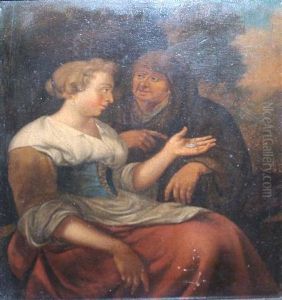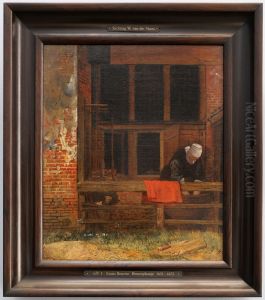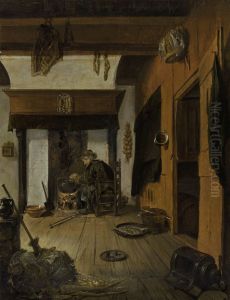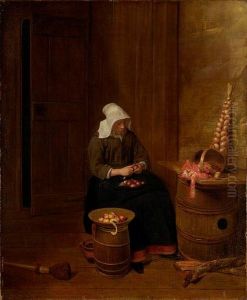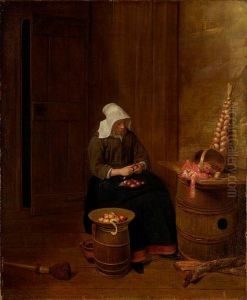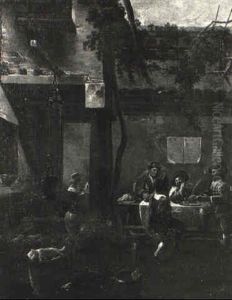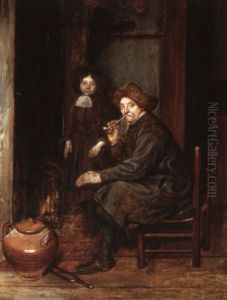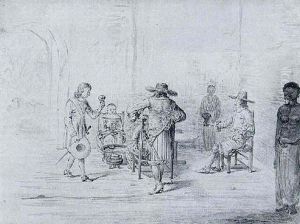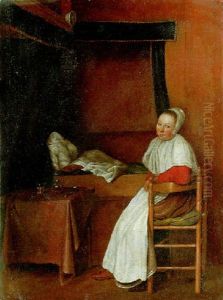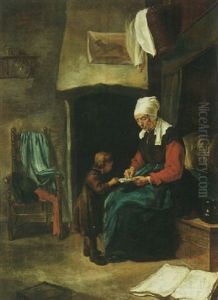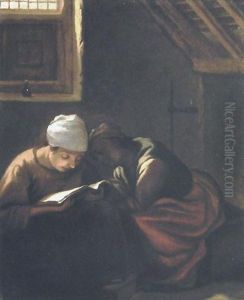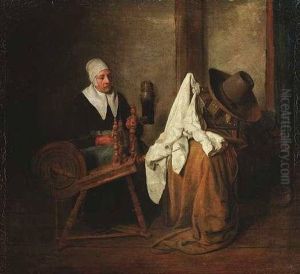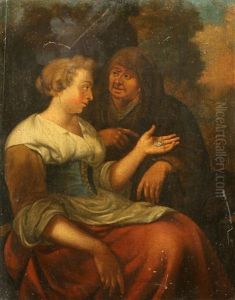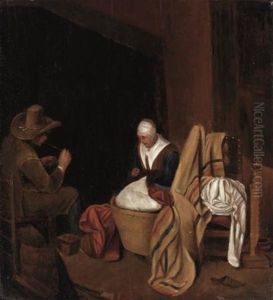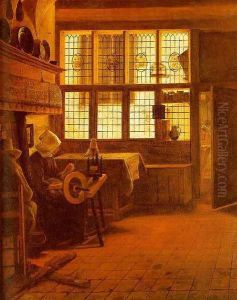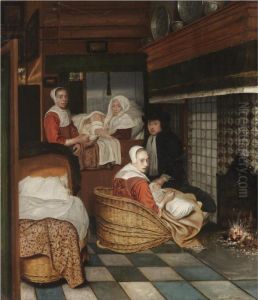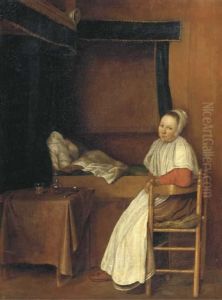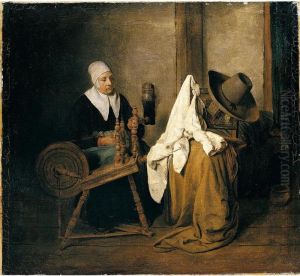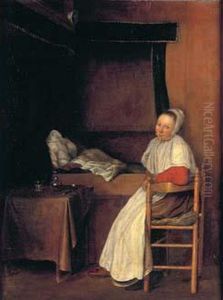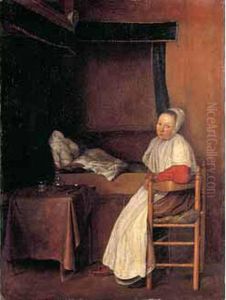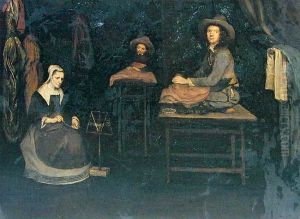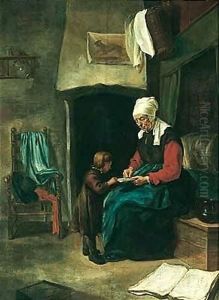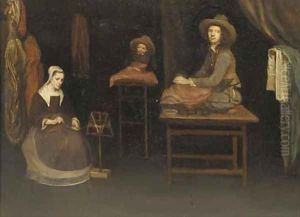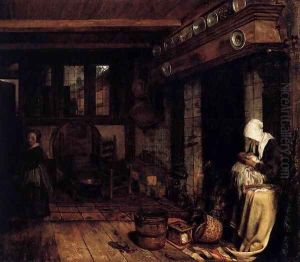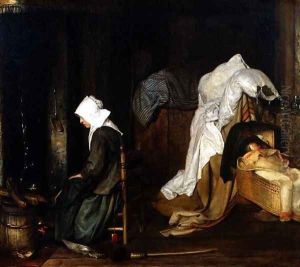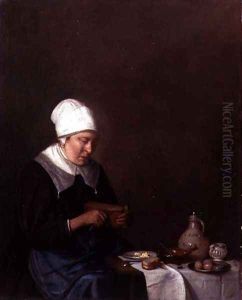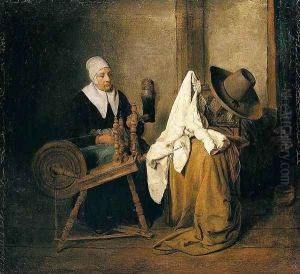Esaias Boursse Paintings
Esaias Boursse, a Dutch painter born in 1631 in Amsterdam, was a notable artist of the 17th century, primarily recognized for his detailed depictions of domestic and daily life scenes, contributing significantly to the genre of genre painting in Dutch art. Unlike many of his contemporaries who were drawn to grand historical themes or portraits, Boursse's focus was on the ordinary and the intimate, capturing the essence of Dutch middle-class life with precision and a keen eye for detail.
Boursse's journey into the world of art began under the tutelage of Rembrandt van Rijn, one of the most prominent Dutch artists of the time. This apprenticeship with Rembrandt, around the mid-1640s, profoundly influenced his approach to painting, particularly in his use of light and shadow, as well as his attention to the emotional depth of his subjects. However, Boursse distinguished his work by choosing scenes of daily life as his primary subject matter, setting him apart from his master's more diverse themes.
Throughout his career, Boursse exhibited a remarkable ability to depict the textures and materials of objects and clothing, a skill that added a tactile sense to his works, making them relatable and alive. His paintings often featured interiors of homes, showcasing families engaged in everyday activities, with an emphasis on the socio-economic realities of his time. This choice of subject matter provided a valuable glimpse into 17th-century Dutch domestic life, offering insights into the customs, fashion, and interior design of the era.
Esaias Boursse's contributions to Dutch art were cut short when he died in 1672, at the age of 41. Despite his relatively brief career, his works left an enduring impact on the genre of genre painting, influencing subsequent generations of artists. Today, his paintings are celebrated for their intimate portrayal of daily life, their meticulous detail, and their historical value in providing a window into the world of 17th-century Holland. Boursse's legacy is preserved in several major museums across the world, where his works continue to enchant and inform viewers about the richness of Dutch cultural heritage.
